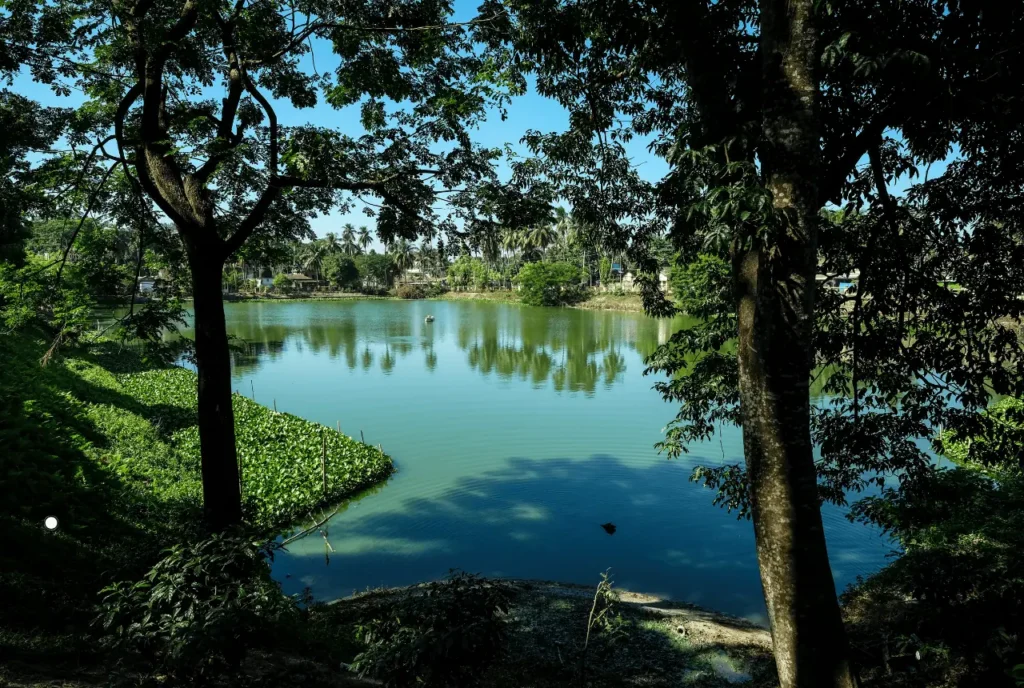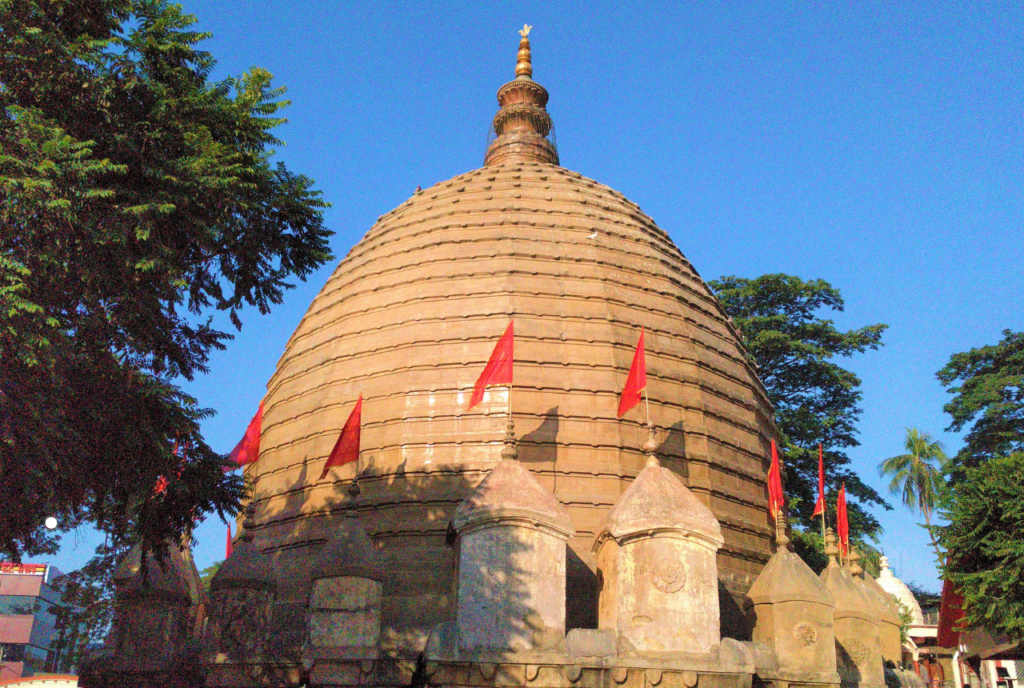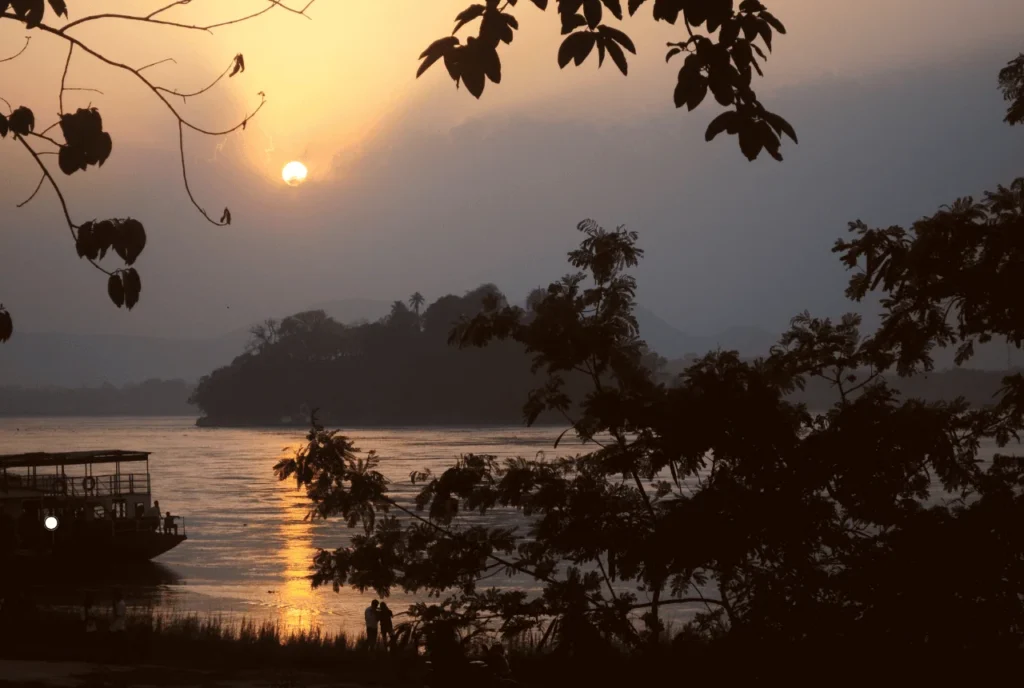Do you ever imagine what stories the old streets of Guwahati would tell beneath their cobblestones?
Having been Assam’s largest city and a gateway to the farthest corners of Northeast India, the thing about Guwahati is that it is not just a destination but a living tapestry with spices of centuries that have gone into its making.
Having seen the wide influence of diversity at play in its people and traditions, this city has stood on the banks of the majestic Brahmaputra. From the resonating echoes of ancient temples to the murmurs of colonial structures, Guwahati is a well-balanced blend of old and new.
If you are planning to take a tour of the historical sites in Guwahati and explore the historical sites, it will give you the vivid history of Assam in the most unequivocal way. Here are five awe-inspiring historical sites in Guwahati that will take you into the bygone era on your next expedition.
Exploring the Historical Sites in Guwahati

Historical sites in Guwahati come alive with a host of monuments, temples, and museums one hinting at the city’s ancient heritage. Heritage sites here have such grandeur and spiritual depth as Assam’s culture.
Among these so many visitors, these monuments speak of the glory of ancient monuments and this huge crowd forms part of the culture preservation history. Heritage tourism turned into a booming culture and Guwahati turned out to be the hub for those who wanted to relish the history and spirituality of Northeast India.
1. Kamakhya Temple

History and Significance
Kamakhya Temple is one of the most significant Shakti Peethas in India, and as it is placed on top of Nilanchal Hill, its beauty as well as importance cannot be ignored. Dedicated to the Goddess Kamakhya, this temple is considered quite important in Tantric Hinduism.
The architecture of this particular temple with rich carvings and a very distinct dome structure epitomizes the ancient Indian architectural styles. According to legend, here lies the yoni or vagina of Sati; hence, an important pilgrim center for the devotees.
What to See and Do
This mystical temple welcomes guests with a colorful appearance that reflects its rites and rituals. The temple becomes a center of spiritual activity every year when thousands of pilgrims and visitors gather for the Ambubachi Mela. A word of advice for visitors: If you want to have an amazing time at this event, make sure to participate in the rituals with respect.
2. Umananda Temple

Historical Background
The Shiva-dedicated Umananda Temple on Peacock Island in the Brahmaputra River is unusual. One of the world’s tiniest populated riverine islands. The temple is an exquisite example of Ahom and Hindu architecture, built in 1694 AD by King Gadadhar Singha of the Ahom dynasty.
Bhasmacala is the island. In the narrative, Lord Shiva burned Kamadeva into ashes for disrupting his meditation out of fury. This temple includes exquisite stone carvings of Hindu deities like Ganesha and Vishnu, demonstrating Assamese craftsmanship. A dedicated local shopkeeper rebuilt it after an earthquake in 1897 and wrote Vaishnavite mantras within.
Visitor Experience
Cross the Brahmaputra River from Uzan Ferry Ghat, also known as Kachari Ghat. The boat voyage lasts 15-20 minutes and costs roughly ₹20 per passenger. They must ascend 100 stairs to reach the temple on the island and admire its architecture and tranquility.
The temple’s elevated location offers nature enthusiasts a stunning view of the river and surrounding area. The island’s biodiversity includes endangered animals like the golden langur. Several festivals, such as Maha Shivaratri, draw devotees to this tranquil place, boosting its spirituality.
3. Navagraha Temple
Astrological Importance
The Navagraha Temple is a pilgrimage site for all those who are interested in astrology. It is located on the top of Chitrasal Hill in Guwahati. The temple was built by Ahom King Rajeswar Singha in the late 18th century and has nine Shivalingams representing the nine planets: Surya (Sun), Chandra (Moon), Mangala (Mars), Budha (Mercury), Brihaspati (Jupiter), Shukra (Venus), Shani (Saturn), Rahu, and Ketu.
It has been believed that each Shivalinga has decorated respective star-bedecked cloth signifying its respective celestial body and is part of the ancient Hindu belief system that associates these planets with various influences on human life. The temple itself serves as a research center in astrology and astronomy.
Scenic Surroundings
Navagraha Temple offers a breathtaking view of Guwahati and the distant Brahmaputra River. This temple complex is very calm, and an ideal place to meditate or explore on a spiritual level. The beehive architecture of the temple complex and gardens invites one to explore this serenity.
Silpukhuri Tank, unearthed during temple building, is also available. A continual water supply for devotees accentuates the site’s natural attractiveness. This is the perfect place at the right moment, where the importance of religion and the gorgeous panoramas make it lovely to be there, whether to find spiritual comfort or simply to enjoy a great view.
4. Basistha Ashram
Mythological Roots
The Basistha Ashram is rich in mythological history and located in the southeastern part of Guwahati and has been deeply associated with Sage Vashistha who is one of the most revered Saptarishis in Hindu tradition. It is said that this ashram was built by Sage Vashistha as he needed blessings from Lord Shiva.
Ashram is found to be referred to in the Ramayana, which gives it a very important place in Hindu mythology. It is believed that Vashistha meditated here until his last breath, and his spiritual legacy continues to draw devotees and visitors alike. The temple complex itself contains three distinct temples in the name of various deities like Lord Shiva, Ganesha, and the sage himself, underlining the spiritual importance of this place.
Activities
Tourists can use this ashram’s serene grounds and the sacred streams where the Basistha River is believed to start its journey. The location is suitable for nature lovers as well as those searching for a peaceful setting. It is said that Sage Vashistha sat in meditation inside a cave five kilometers from the main temple.
This place is really scenic and an ideal spot for trekkers. Nature enthusiasts explore the varieties of plants and animals in the nearby Garbhanga Reserve Forest. Basistha Ashram also offers spiritual retreats as well as complete isolation near nature.
5. Hajo
Multi-religious Heritage
Hajo is an exceptional town in Assam, considered a holy place for Hindus, Buddhists, and Muslims as it epitomizes the syncretic module of religious coexistence. This site is epitomized by such prominent sites as Hayagriva Madhava Temple and Poa Mecca. Not only for Hindus, the Hayagriva Madhava Temple is considered a sacred place for Lord Vishnu, but also for Buddhists, a site where Lord Buddha achieved Nirvana.
Simultaneously, Poa Mecca, believed to hold soil from the holy city of Mecca, has been considered an important pilgrimage site for Muslims for its merit in equivalent spiritual activity as that of the Hajj pilgrimage
What to Explore
Here, visitors will find the old shrines and come to terms with the religious diversity characterized by this place. In the Hayagriva Madhava Temple, one will gain insights into Hindu and Buddhist practices, and Poa Mecca invites Muslims to join in with its rich traditions.
Festivals in the town are mostly staged by all three communities, which results in easy interfaith dialogue and coordination. This tapestry of cultures presents a rich weave and livens up the visitor experience while at the same time epitomizing the continued spirit of co-existence embodied in Hajo.
Conclusion
Relive the stories of these sacred sites and explore Guwahati. The mist of Kamakhya Temple, where the divine feminine is strong, touches you, and the peaceful silence on Peacock Island calls to mind eternal love. Seek celestial wisdom at Navagraha Temple and quietude at Basistha Ashram- joining earth and spirituality. Finally, Hajo reminds us of the power of diversity, in a culture of harmony.
Your passage through Guwahati is not a visit; it’s rather an odyssey through time, when rich Assam heritage comes alive in colors of vibrancy, inviting you to explore and behold.


